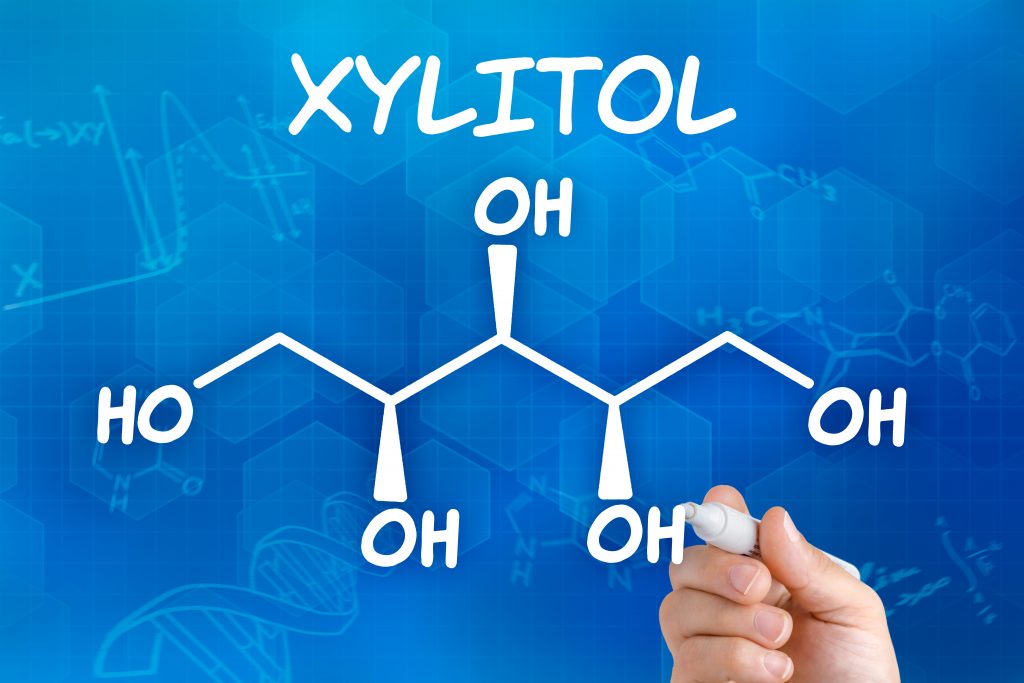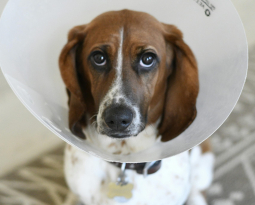Xylitol. It even sounds bad. That ‘x’ does a lot to make it sound like Tylenol’s evil twin, twirling mustache and everything. Xylitol is a compound, an artificial sweetener, found in a number of foods that dogs might find themselves getting ahold of and devouring. Most owners know vaguely the danger of chocolate but it’s not the only sweet to be on the lookout for. Wondering if your dog got into something that contains it? Wanting to know what to keep an eye out for? We’re going to cover that and more.
Xylitol
Xylitol is a sugar alcohol used in a wide number of foods as a sugar substitute as well as naturally in fruits, trees, and more. It’s extracted from vegetable matter for use commercially. It has existed and used as a sugar substitute for a long time but only recently has its popularity exploded due to it having a low glycemic index as well as its dental plaque fighting properties. Despite these positive impacts on human health, it does not translate over to our canine friends.
In dogs, xylitol, even in the smallest amounts, can cause low blood sugar (hypoglycemia), liver failure, seizures or death.
Why? Blood sugar is regulated by insulin being released from the pancreas. In us, that is to say humans, xylitol does not trigger that release of insulin. In non-primate animals who ingest something containing xylitol it is rapidly absorbed into the blood and pancreas released a huge dose of insulin all at once. This hypoglycemia hits within 10 minutes to an hour and can be fatal if untreated.
What are dog illness symptoms from xylitol?
If you suspect your dog ate something with xylitol stay alert, the effects will begin almost immediately. Within 15-30 minutes of ingestion usually. Symptoms include any or all of:
- Vomiting
- Weakness
- Lack of coordination/difficulty in walking or standing
- Depression
- Lethargy
- Tremors
Severe cases may have seizures, liver failure, or a coma occurring. Because this is such a rapid onset of symptoms and complications, your vet is not going to wait for a confirmed diagnosis before they begin the treatments.
Xylitol Treatment
There is no ‘At-Home’ treatment for xylitol consumption. If it happens If you get your pet to the vet quick enough, and no signs have begun, your vet may begin with attempting to induce vomiting. This can help prevent the xylitol from further being absorbed. If symptoms have begun developing, the vet will order blood work to determine whether the glucose levels are low or if it is a low potassium situation.
With that info in hand, your vet can begin the necessary corrections. Your dog will need to be hospitalized for the duration of the procedure, just by the nature of needing constant blood sugar monitoring, fluids, administration of dextrose, and liver protectants, as well as all the other support care that is necessary.
So long as your dog begins receiving treatment before the symptoms truly develop, the prognosis is likely to be good. The hypoglycemia can be quickly reversed! If it has already proceeded to a point where the liver is failing or any bleeding disorders have developed the prognosis is worse, should the dog fall into a coma it is even poorer.
But it can be prevented! Simply make sure that your pets don’t have access to any sort of foods that contain xylitol, and any products you may use that contain the substance are well out of their reach and you’ll have gone a long way to keeping them healthy.
If you suspect your pet may have eaten anything containing xylitol, contact your vet right away and begin treatment!





